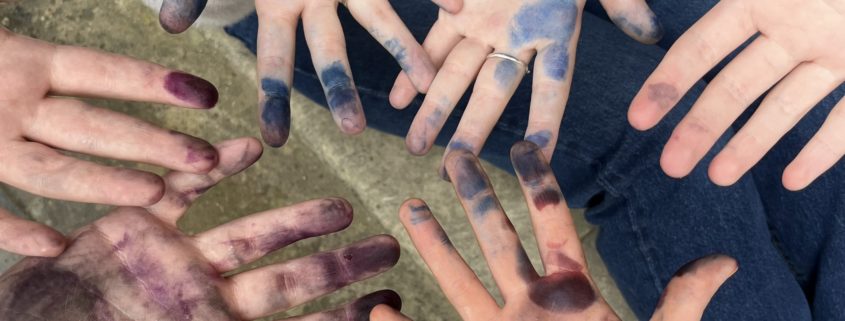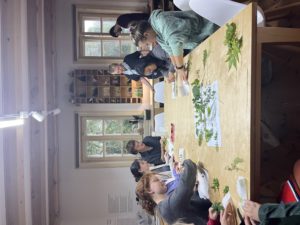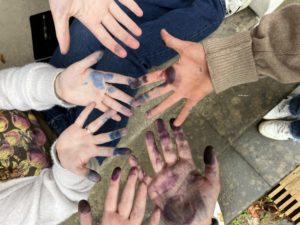Sejny as Inspiration for a Refugee Organization in Syracuse
By Sofia DaCruz
In northeastern Poland, on the border of Lithuania, lies a small and unique town called Sejny. Sejny, like most towns in Poland, experienced the devastation of World War II both in the literal destruction of its infrastructure and the murder of its Jewish population. Yet, unlike most places in Poland, a group of Sejny activists has made a deliberate effort to rebuild on an interpersonal level through educational programs that forge connections between the diverse national backgrounds within the town. This rebuilding work is fostered through an organization called The Borderland Foundation which was established for the purpose of building bridges to promote co-existence and community within the diverse town. In Syracuse, I work for an organization called Refugee and Immigrant Self Empowerment, or RISE, that seeks to serve a similar role in building community amongst the city’s diverse refugee population. As visitors to the Borderlands Foundation, we witnessed how their educational programs preserve memory and create connection, providing inspiration for educational programs that can serve a similar role in creating community when placed in the context of RISE.
One of the educational programs that we saw was a storytelling project where young students asked older generations about their personal experiences of WWII. Sitting in a dark theater in the former yeshiva, we chose short films to watch from a list of titles. The first was entitled “The Piano” and told the story of a German soldier entering a family’s home to play the piano as the narrator’s Jewish uncle hid only a wall away. Watching the stop-motion animation, I was brought to tears by this intimate portrayal of life during the war. My emotional reaction to this short story shows the effectiveness of the project, where my understanding of the personal experiences of war was deepened despite my different social location and lived experience. In Sejny, the younger generations who heard stories from their grandparents gained insight into the history of the space that they live in, creating a sense of connection to place and between people. This storytelling project served a role beyond just intergenerational connection by providing connection between experiences of different nationalities. Through the exploration of an event like WWII, people of different nationalities connected through the ways that the war affected them all. By exploring a past conflict, ensuring it is remembered, and providing an opportunity for connection, the project also serves a role in preventing future conflict. As shown by the family hiding their Jewish relative-in-law in “The Piano,” people protect those whom they feel connected to. The story-sharing project in Sejny plays a unique role in developing a strong and interconnected community, one that in the face of violence comes together to stand up for one another.
Syracuse, like Sejny, is a diverse city that has also experienced violence. The violence that Syracuse has experienced, however, does not necessarily create a unifying experience as it relates to the racist practices of redlining and the destruction of Black neighborhoods. This past violence is very much present today, with neighborhoods and schools that are deeply segregated creating a fragmented community. When considering the function of intergenerational storytelling projects like that of the Borderlands Foundation in Syracuse, the reality becomes complicated by context. Most of RISE’s clients are from Sudan, Syria, and the Democratic Republic of Congo, with languages and cultures that are very different from those of Americans living in Syracuse. In Sejny, while the population is diverse and there is a history of segregation between nationalities, there is a smaller margin of difference between Lithuanians and Poles and both nations have experienced WWII providing a point of connection. Particularly when thinking about refugee and non-refugee communities in Syracuse, there is no clear unifying experience. In Syracuse, a story-sharing project between refugee and non-refugee communities could unintentionally serve as a point of disconnection because of the different experiences of these two groups. While the project could allow the non-refugee community to better understand refugee experiences, I question what purpose it would serve to benefit refugees. The project could also unintentionally reinforce stereotypes that Americans have about Africa and the Middle East, creating a sense of pity rooted in power dynamics rather than true understanding. In Sejny, connection is being made between nationalities, but in Syracuse, there is an aspect of race that must be considered especially within the context of deeply ingrained and systemic racism. When considering the implementation of a storytelling project in Syracuse, the reality becomes complicated, and yet inspiration can still be drawn from the work of the Borderlands Foundation. The Borderland Foundation’s focus on art and education as the prevention of future conflict can be applied to Syracuse, a city that struggles with violence. While the storytelling project specifically cannot be applied to a Syracuse city context, within RISE, the project has an opportunity for success.
In my role at RISE, I have witnessed a generational disconnect within the refugee families that I work with. I have noticed that when I interact with mothers, they typically speak very little English, while their daughters speak confidently and fluently. I have also witnessed a cultural disconnect where younger generations are more assimilated to American culture given the pressure to do so in American schools, while their parents are more connected to the culture of home. As I listened to the stories and watched the stop-motion films in Sejny, I thought about the ways that a storytelling project could be used at RISE. With the focus on oral storytelling, the project would provide a level of accessibility across language barriers, allowing stories to be told in native languages with the necessary subtitles. In Sejny, the younger generations who heard stories from their grandparents gained insight into the history of the space that they live in fostering an understanding of their own identities. A project where girls ask their mother’s stories about their experiences growing up in their native countries would provide a similar connection between generations, allowing young girls to better understand their own identities. The project could be developed so that daughters also share their experiences of migration with their mothers, giving their mothers insight into refugeedom from a child’s perspective. When considering intergenerational connection, especially within families, a storytelling project could serve a similar role in refugee communities of Syracuse that it does in Sejny, providing an opportunity for connection.
When returning to my role at RISE, I will remember the projects from the Borderlands Foundation, particularly the ways that educational programs can serve a role in creating connections between generations. I will carry with me the focus on connection and community as essential for the prevention of future conflict. I will also remember the continuity of their work. The programs created by the Borderlands Foundation were sustained and long-term as are the processes of community building. While there are complications when considering the connection between the refugee and non-refugee communities of Syracuse, the lessons from The Borderlands Foundation remain true. With careful consideration of context, the Borderland Foundation’s projects can serve as inspiration for RISE as it aims to fulfill the goals of developing connections within and beyond the refugee community.




